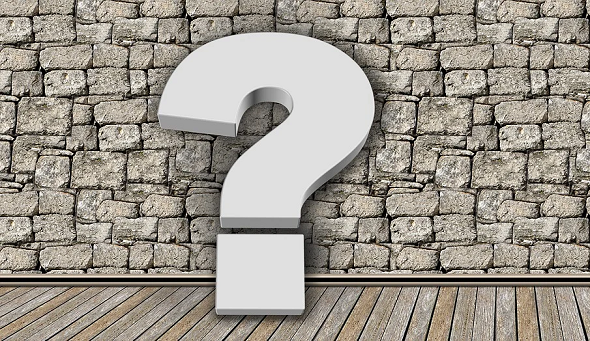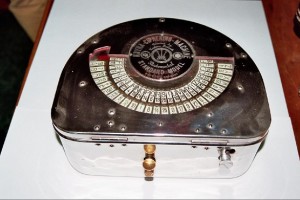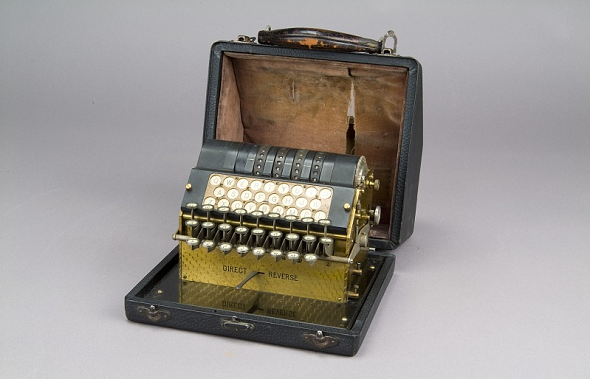An old newspaper article mentions a Czech cipher machine from the 1920s. Can a reader find out more about this device?
Deutsche Version des Artikels (Test)
The decade after the First World War is an interesting one for crypto historians. After almost all (manual) encryption systems used in during the war had failed, numerous engineers now developed machines for encryption. Their goal was to create devices that were easier to operate and more secure than the paper-and pencil systems that were employed before.
Cipher machines from the 1920s
Although the concept of machine-based encryption proved successful, the first decade was hard. Many early cipher machine designs failed or only made it to practical use only after substantial redesigns.
For instance, the early models of the Enigma proved impractical. The Kryha encryption machine …
… was neither secure nor user-friendly. The Zschweigert cryptograph …
… was flawed. The machines designed by Edward Hebern …
… belonged to the best of the 1920s but were still not successful. The cipher pantograph …
… by Gilbert Vernam wasn’t a top seller, either.
The Panmillion cryptograph
Slovak crypto history expert Jozef Krajčovič recently found a description of another encryption machine from this interesting time: the Panmillion cryptograph. According to a blog post Jozef wrote, this device was invented by a Czech military captain named Josef Sieber. Sieber also invented a cipher pantograph, probably similar to the one mentioned above, but this device is not relevant here.
The Panmillion cryptograph is mentioned in a 1920s newspaper article (Narodni listy, No. 69, vol. 65, p.10) Jozef introduces on his blog. Jerry McCarthy has thankfully provided me the follwing translation of it (check here for an annotated version):
Last May we reported on the remarkable invention of Czechoslovakia Captain Josef Sieber’s “deformation pantograph”, the production of which has now been taken over by the Prague company Srb a Štys. Today we can report on a new invention by the same officer, an encryption and decryption machine which the inventor called “Panmilion” and which not only stands out with the best known design of these combined machines, but surpasses them in its relative simplicity and ease of use.
Currently, “Enigma”, about which we once reported, is considered the most perfect encryption machine. That machine is similar to a normal typewriter, with a three-row keyboard and a total of 26 keys. The alphabet of this machine has 52 international characters.
The machine can be equipped with 24 thousand million different keys. The function of the machine is such that automatically, when enciphering, instead of a written letter, the machine itself writes another letter, when repeating the same letter it replaces it again with another letter.
The machine must be connected to a 120-220V normal power line or it can be powered by a battery pack of the same power, or it requires a special generator to produce the necessary electricity. Typing is similar to ordinary typing.
We simply type the message using the machine, and it itself writes it in cipher; when decrypting, the letter of the encrypted message is typed, and here, if the machine is set to the same key as the machine with which the message was encrypted, the machine writes the original text.
Captain Sieber’s encryption machine can be connected to any ordinary typewriter; typing on it is the same as typewriters. Machine size is 360x360x140 mm, its weight is 8 kg. An electric supply of 4 – 6 V is sufficient to drive it. The basic number of keys is approximately 400,000 sextillion.
The alphabet of the machine contains 35 characters. There are another 531,441 options for each key, ie additional keys. Each letter has a special key, arbitrarily controllable and changeable even during the process of writing one message; the key of one letter is in no way in relation to thekey of another letter.
The machine is equipped with two methods of encryption, either in alphabetical characters (letters) or in numbers. The special equipment of the machine enables perfect writing in all languages where Latin is used.
The machine converts the special marks of a language into the international Hughes alphabet, and when decrypting, the re-emerging text automatically provides these marks. The machine can be brought into three positions, from telling special marks and letters of all national languages. The machine can be manufactured in 74,000 different constructions so different from each other that even with a known key, it is not possible to decrypt a message written by a differently constructed.
As a result, the machine can be used simultaneously in many institutions and in many states without the risk that even if the key is revealed, the owner of another construction could decrypt the messages not intended for him.
The internal connection would be the secret of the owner of the machine and could be easily changed at will at any time. Due to the sufficient strength of the 4-6 Volt supply, the machine can also be used for service in military formations in the field in the event of mobilization, as two small dry batteries are always easy to obtain and renew.
Attaching the machine to an ordinary typewriter does not preclude the typewriter from typing; it is possible to type on the typewriter even if the Panmilion encryption machine is connected. The price of a machine is a good half less than the price of other solid encryption machines.
According to our detailed information, we can confirm that the Panmilion encryption machine is a surprising work of a serious inventor, and with its construction it achieves primacy in this field today. It will be interesting to see whether the inventor will find an enterprising manufacturer in this country or whether he will have to look for it, to our economic damage, abroad.
The Panmilion cryptograph allegedly could be used with “any ordinary typewriter”. I assume that this is not true and that only an electric typewriter was suited. In addition, the article mentions the Hughes alphabet, which probably means that the device could be connected to a Hughes telegraph …
…, a popular telegraphy machine of the time.
According to Jozef, the Panmilion cryptograph might be have been a rotor machine similar to the Enigma. Does a reader know more about this device? If so, please let me know.
Follow @KlausSchmeh
Further reading: Edward Hebern’s mysterious vacuum tube cryptograph
Linkedin: https://www.linkedin.com/groups/13501820
Facebook: https://www.facebook.com/groups/763282653806483/








Kommentare (10)